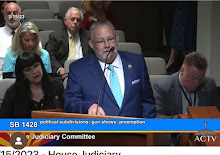On October 14, 1912, Theodore Roosevelt did what any larger-than-life figure would do when faced with an assassination attempt—he gave an 84-minute campaign speech. Yes, you read that right. Shot at point-blank range, bleeding from the chest, and possibly on the brink of death, Roosevelt waved off medical attention to deliver his speech in true Rooseveltian fashion. Why cancel a campaign event over something as trivial as a gunshot wound?
Let’s paint the picture: Roosevelt, four years removed from the White House, was in the middle of his third campaign for president, running under the Progressive Party’s banner—the newly formed "Bull Moose" Party, as it would famously be called after this fateful night. Tensions were high after he had lost the Republican nomination to his former ally-turned-rival, President William Howard Taft. So, what better way to get back into the political ring than to survive an assassination attempt and just... keep going?
It was 8:10 p.m. in Milwaukee when Roosevelt stepped out of the Hotel Gilpatrick to greet the crowd gathered outside. Always the showman, he paused to wave his hat in appreciation, not knowing that within moments, his life would be hanging by a thread. As he stood there in the open car, a man named John Schrank, a New York City saloon keeper, fired a shot straight at Roosevelt’s chest.
Now, here’s where Roosevelt’s legendary toughness gets a bit of help from sheer luck—and his extensive preparedness. The bullet was slowed by a metal eyeglass case and a bulky, rolled-up 50-page speech sitting inside Roosevelt’s coat pocket. That’s right, the man literally had a bulletproof speech.
The round from Schrank’s .38-caliber revolver lodged itself in Roosevelt's chest but miraculously missed his vital organs. Blood quickly soaked his white shirt, turning it crimson. But did that stop Roosevelt? Of course not! As he was famous for saying, “Speak softly and carry a big stick.” In this case, the “big stick” was his indomitable willpower.
Roosevelt’s first words to the shaken crowd were characteristic of his grit. “Ladies and gentlemen,” he declared, “I don’t know whether you fully understand that I have just been shot, but it takes more than that to kill a Bull Moose.” With that, he proceeded to speak for over an hour, despite the bullet still lodged in his chest.
At any point during those 84 minutes, Roosevelt could have passed out or bled out, but this was Theodore Roosevelt—the man who charged up San Juan Hill, wrestled with the political elite, and won. A gunshot was, apparently, just a minor inconvenience.
Even as he stood there, visibly weakened, his voice booming through the hall, Roosevelt wasn’t going to let a little assassination attempt get in the way of his message. He joked with the audience that the bullet was embedded in him so firmly that doctors had deemed it too dangerous to remove right away. “I give you my word,” he said, in classic Roosevelt flair, “I am going to make this speech, and then we can attend to my wound.”
This night in Milwaukee became one of the most memorable and defining moments of Roosevelt’s campaign, solidifying his status as a rugged, relentless leader who could truly withstand anything. It also helped cement the legacy of the Bull Moose Party, a fitting name for a movement led by someone with such ferocious tenacity.
The story of Roosevelt’s survival was front-page news across the country, and his political opponents must have been shaking in their boots—after all, how do you compete with a man who literally takes a bullet and keeps going?
While the Progressive Party ultimately didn’t succeed in getting Roosevelt back into the White House, the legend of that night in Milwaukee lived on. Roosevelt may not have won the election, but he certainly won the day. And in doing so, he reminded the nation that sometimes, when life (or a would-be assassin) throws a curveball, the only thing to do is to keep charging forward like a bull moose—one speech at a time.

